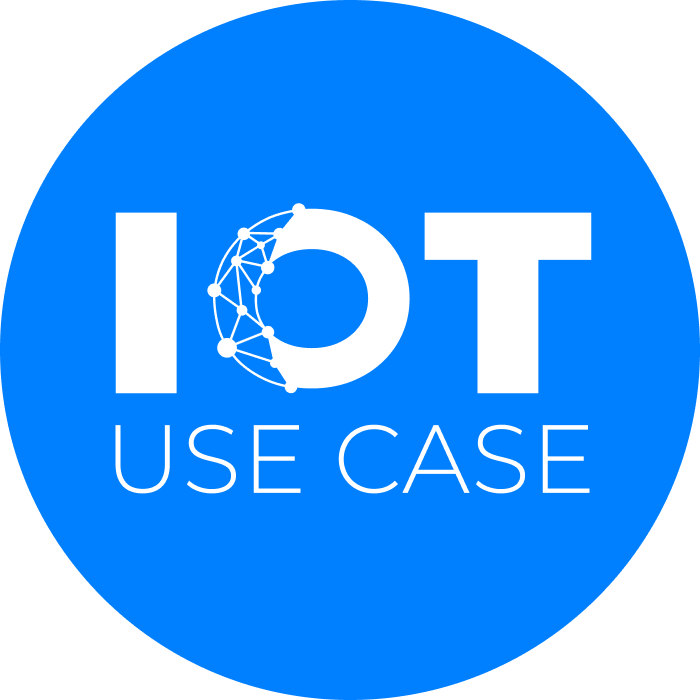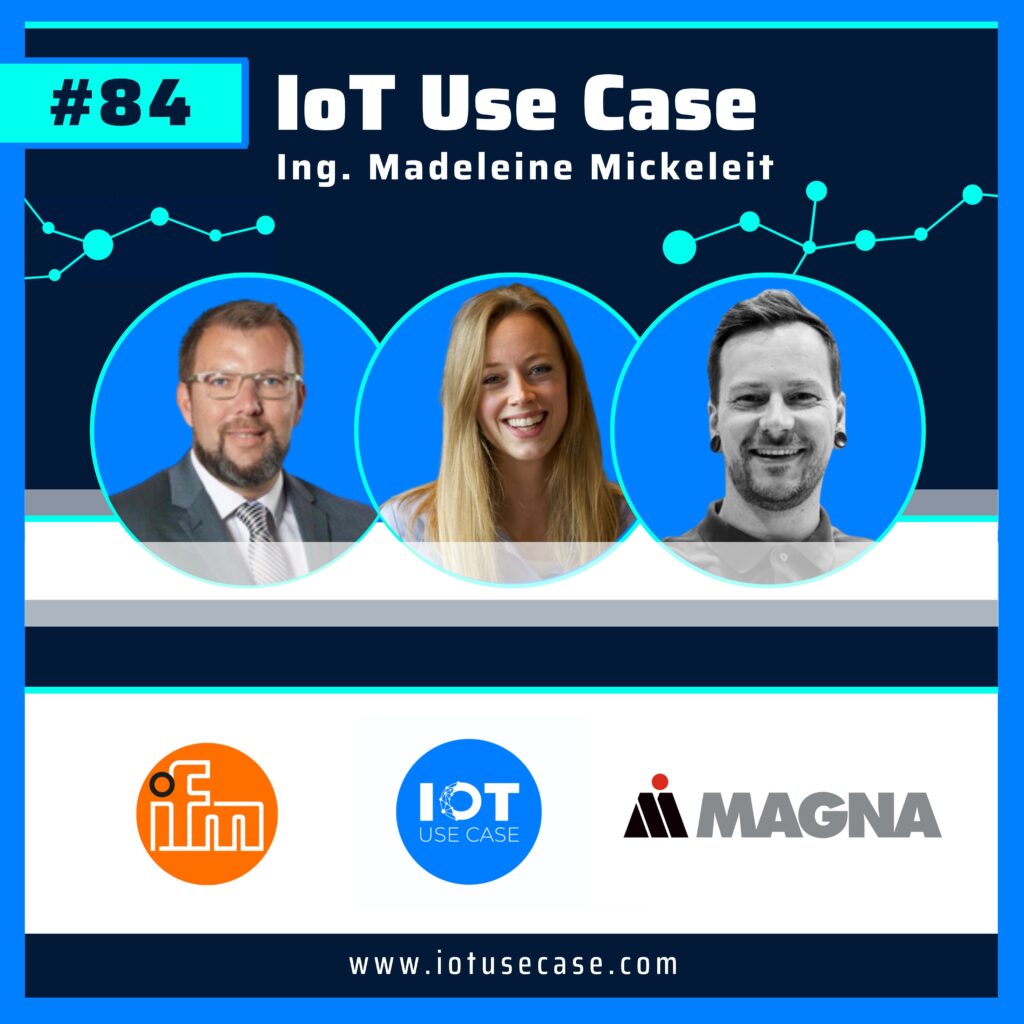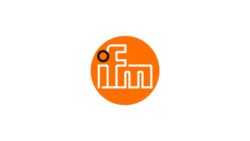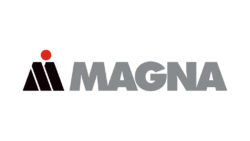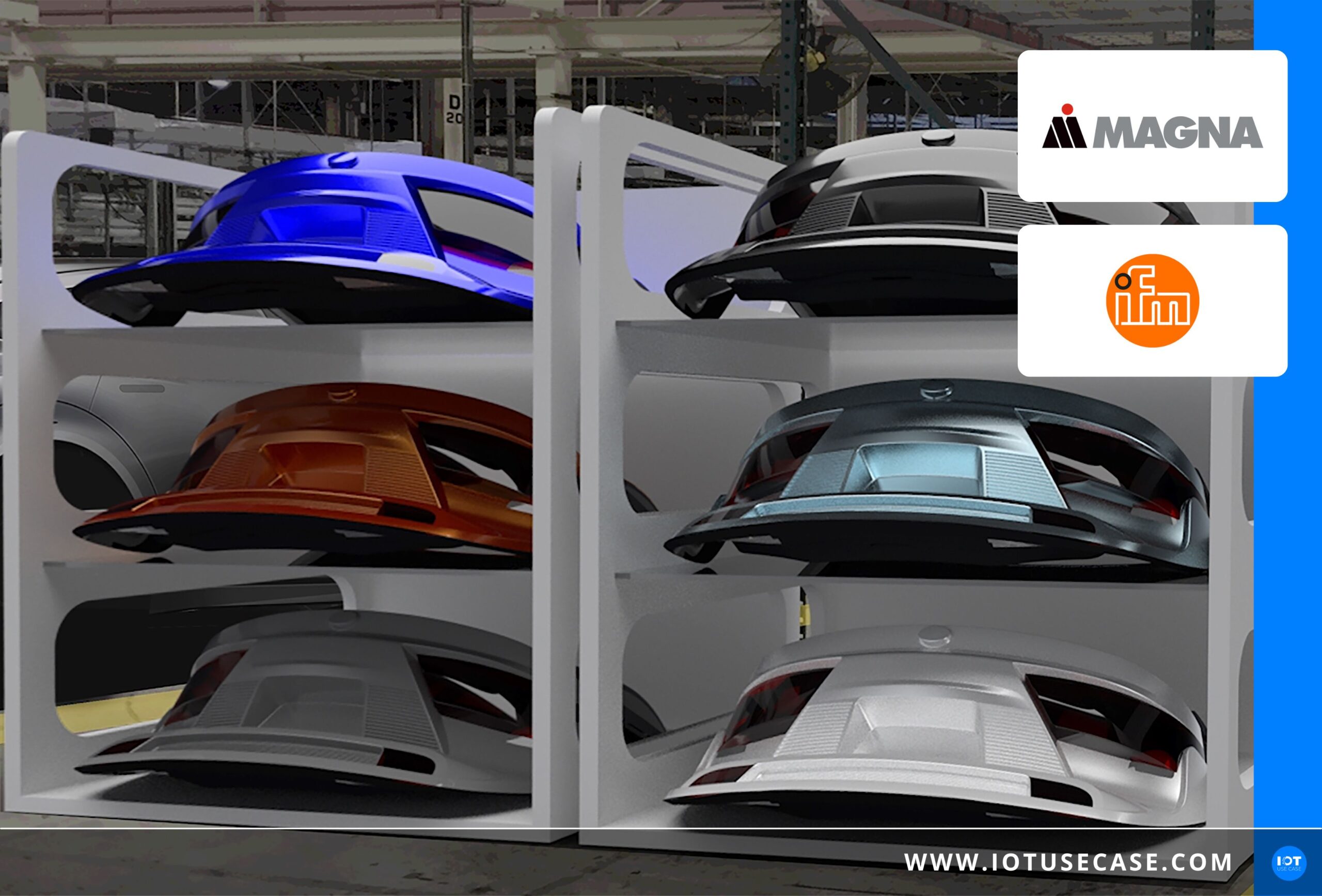The major automotive parts manufacturer and supplier Magna International relies on the competences of ifm electronic and especially on the IIoT platform moneo for the digitalization of its production processes. Its great advantage according to users: its openness. In this podcast episode, the application is explained in more detail and, for example, in connection with the vibration analysis of a paint shop. Challenges, solutions and what productive results the IIoT deployment has resulted in for Magna – all in podcast episode 84.
Episode 84 at a glance (and click):
- [08:25] Challenges, potentials and status quo – This is what the use case looks like in practice
- [13:36] Solutions, offerings and services – A look at the technologies used
- [24:30] Results, Business Models and Best Practices – How Success is Measured
Podcast episode summary
In this podcast episode, Sebastian Schlicht, head of automation at Magna International, reports from the Meerane site, near Zwickau in western Saxony. Primarily, exterior trim, bumpers, sill trim, but also support parts installed in the bumper are manufactured there – from injection molding, to painting, to final assembly “Just in Sequence” directly to the assembly line.
The goal of digitalization at Magna International is to make production processes as transparent as possible so that the company knows exactly how resources are being used, can design processes more efficiently, and thus save resources. This episode, for example, deals with the vibration analysis of a paint shop.
The solution provider is ifm electronic – represented here by Tilo Haug, Senior Manager Automotive. ifm is a developer, producer and supplier of sensors, controllers, software and systems for industrial automation and digitalization. With the ifm moneo solution, a digital toolbox in the form of an IIoT platform consisting of basic software and applications, ifm provides an open, manufacturer-independent system. It easily reads and processes the sensor data generated in the production facilities.
How exactly ifm moneo works, why Magna International relies on the ifm solution, how it is structured and what productive results the implementation has brought, can be heard in podcast episode 84 of the IoT Use Case Podcast.
Podcast interview
Today’s guest is the company “Magna International” as one of the largest automotive suppliers with 170,000 employees, 345 production sites and 90 product development engineering and sales centers in 28 countries.
I am very interested in this topic, as I myself have worked in body development in the automotive supply industry. Today, Sebastian, the head of automation, is joining us directly from the shopfloor for Magna Exteriors; he is joined by IoT partner “ifm”. Today, they explain to us what Magna International’s vision is in terms of digitizing its plants, what use cases there are to be solved on the shop floor in terms of machine availability, and how they implemented them together.
Hello Tilo and Sebastian, I am glad that you are with us today! Welcome to the podcast! Tilo, how are you and where are you at the moment?
Tilo
Thank you for the invitation, I am happy to be with you! I’m at home today, which is rare at the moment. I’m fine since it’s soon the weekend.
Where else are you at ifm? You guys are wide ranging in terms of locations.
Tilo
I am often on the road in Essen at the headquarters, or also at Lake Constance. My office is usually in Puchheim, west of Munich – from time to time I can be found on the street.
And Sebastian, how are you and where are you right now?
Sebastian
Good! You just reached me at work; the last official appointment is the podcast, practically the highlight of the day. Fortunately it snowed, even if the journey was a bit challenging, everything is okay.
Then you already had a little glimpse of the “Winter Wonderland”. I’m sitting in Erlangen right now and it’s just raining here.
I would like to introduce ifm briefly from my point of view: ifm itself is known mainly from the development, production and sales of sensors, of controllers and software systems for industrial automation; you deal with practically everything to do with “measurement, control and evaluation” – here you are the experts. You have already been on the road for a long time as pioneers in digitization technology.
Here are a few more KPIs: You were founded in 1969 and are family-run. You are now in the second generation and practically “old hands”. With 8,100 employees, you are operating in 180 countries, making you one of the global industry leaders.
With your own IoT platform “moneo”, you are also very well positioned in this area. This is a platform where any sensor technology can be connected via IO-Link, for example, the data can converge there, but can also be integrated.
This platform can already be used by small companies, and of course also by larger ones with their own server landscape. Theirs also offers IoT hardware, RFID gates, gateways and associated interfaces.
Tilo, you are Senior Manager Automotive at ifm. What does your department do and what clients do you work with here?
Tilo
A very good introduction to ifm! My department is responsible for the sector “Automotive in German companies”. We are a small but very active department. In total, we are 5 people – four team members and me. In Germany, we have five “target industries”; one of them is the automotive industry. Our main activity is the support of key customers, including the company Magna Exteriors. Not to mention raising ifm’s profile through networking and industry contacts.
How did you meet Sebastian?
Tilo
This has also happened out of industry contacts. We are a member of an automotive cluster in eastern Germany; among others, companies such as “BMW”, “Porsche” and also “Magna Exteriors” are members there. There I met the managing director and that’s how Sebastian and my team became responsible for this project.
Can you briefly explain what use cases you serve at ifm in the area of IoT?
Tilo
We have already presented good examples to you on the platform, including our “mate” worker assistance system, where assembly procedures can be specified and checked. We have done a large IoT project at the company “Feldbinder” in the mobile applications field – these are mobile working machines. We are also in the water treatment business. Here we have carried out condition monitoring. Furthermore, we have installed chemosensor monitoring on drives and pumps.
This leads me to the project with Magna Exteriors, where we also used chemosensors to monitor drives.
If there is any interest from the audience, you can check out the use cases in the show notes. You are open to contacts, so I would link your contact as well.
The Magna Group is known on the market as a globally innovative company, in all areas of vehicle exteriors. You do the material development as well as the design, up to the manufacturing and assembly. Actually, everything you need for the production and development of efficient vehicles in the world; here you have very different products, including tailgates, vehicle doors and bumpers.
I am very pleased that you are with us today, because we already had Markus Binder as a guest, who worked in a different area at Magna International. I would be interested to know what you in particular do and what your visions in terms of IoT, or digitalization, mean for you personally and your department.
Sebastian
I, for one, work at Magna Exteriors as the automation manager. I deal with automation in the area of injection molding, i.e. the removal of our products from the injection molding machines. That’s handled by my team, and around me I have another three colleagues who are there doing their programming.
My second hobbyhorse is the digitization of the company. That means I manage the maintenance system, but I also have to deal with topics like energy management. As an additional field, I now have condition monitoring, where we are taking the first steps with ifm.
Our goal with digitization is to make production processes as transparent as possible, i.e., to know the consumption of resources, thereby making processes more efficient and saving resources as much as possible.
Challenges, potentials and status quo - This is what the use case looks like in practice [08:25]
What location is that where you are? What kind of processes are you running here and what kind of customers or even manufacturing processes do you have here?
Sebastian
At our site, we primarily manufacture exterior trim, i.e. bumpers, sill trim, but also support parts that are virtually installed in the bumper. We manufacture a complete bumper from scratch. This goes from injection molding, to painting, to final assembly, where it delivers “Just in Sequence” directly to the assembly line. All this takes place here at the Meerane site – near Zwickau in western Saxony.
You have a wide variety of processes, what are classically your challenges on a day-to-day basis and what are potentials that you have seen?
Sebastian
With regard to technology, the goal is to keep machine availability on site as high as possible and selection times low. However, the quality of the products must be kept high at the same time; tools such as those from ifm support us in this.
When I imagine a paint shop, there are probably many different and complex processes running there. What would be the worst case scenario if something were to fail here?
Sebastian
A huge and complex process actually takes place at the paint shop. If we bring the plant to a standstill here due to any failures of the technical equipment, then it will not take long and we will shut down our customer because we deliver Just in Sequence; here the top priority must be to prevent that.
If we’re talking about different plants, can you give us an idea of what data is relevant?
Sebastian
If I look ahead to the pilot project of ours, it is specifically about a ventilation system, or rather a motor that supplies the system with fresh air. Here, due to the nature of motors and fans, we have vibrations that occur during operation; these are values of interest.
So here we are talking about motor vibration and unbalance of the bearings.
You have started a pilot project; is this then data that has already been evaluated by the engine from ifm side before or what is the data from the engine that is exciting here?
Tilo
If I go into what we did at Magna Exteriors: Because of the drives from the ventilation systems, we want to avoid unplanned downtime. So this is mainly about frequency data recorded with a sensor on the motor. This frequency data is then converted into information on bearing damage or unbalance.
Accordingly, there is the possibility of already making a preliminary evaluation of the data on the engine itself.
Tilo
Exactly, as close to the plant as possible. The sensors then transmit this to the diagnostic unit, and this unit turns this frequency data – which no one could do anything with – into readable information.
Sebastian, you have selected ifm and are working together on this project. What were technological requirements for the solutions where you say that has to be in place for the whole thing to be successful as a company.
Sebastian
Solutions are aplenty. For our claim, the system, which is used there, should be simple, but effective. The colleagues who work with it should not be overburdened, but supported. Therefore, our goal is also to create acceptance for the colleagues, with which they work in terms of maintenance.
The focus is on understandability, it should be easy to use, but make effective statements with the information it provides us. Here, moneo as an open system or platform offers us, in addition to the classic condition monitoring, further modules where we can record and process process data, which also makes the system scalable.
Solutions, offerings and services - A look at the technologies used [13:36]
You have started a pilot project for an actual plant. What exactly does the vibration analysis look like at this paint shop?
Tilo
We have a sensor that initially picks up the vibrations. Usually this is placed on the A and B sides of the drive, which records vibration data and transfers it to the vibration unit. You can imagine this as a small Siemens control. A parameter set is loaded on it, which effectively looks at the frequency in the evaluation and thus one can conclude on unbalance or bearing damage and still look at the bearing damage in detail by saying whether there is damage in the internal or external system. Stock data is stored here, on the diagnosis of one of our algorithms for evaluation.
In the end, our goal as ifm is to simply give the customer a “green-yellow-red traffic light” for the condition of the engine to make it as easy as possible for them in the evaluation for maintenance.
If I zoom into the project: First of all, such sensors and also diagnostic units have to be put into operation. How does that work, Sebastian? How do you install the hardware?
Sebastian
We have chosen a motor that has 75 kW. This is a recirculating engine and this is where we’ve done vibration diagnostics in the past and already had a point to proceed from. So we have installed the vibration sensor on A and B side. All this is done by ourselves, because in terms of installation it is not a big problem for a skilled electrician. We have installed evaluation units directly in the control cabinet. Everything that was commissioning was then done together with a service technician from ifm. This includes commissioning the diagnostic unit, installing the software, integrating the first values into this software, defining the limits, what the next conclusions are and what is important for the guys working on it: training.
How does data acquisition work after commissioning? When will the first data come from such a sensor?
Tilo
Data comes as soon as you connect the power. These are then first transferred to the diagnostic unit. Here, they are first pre-processed and passed on to moneo via Ethernet, where it is made visible in a monitoring system. Initial error messages are sent out via email here; you could use the bad word “plug and play”. Once you do that, it’s pretty easy to get such a system up and running.
Sebastian, is there anything else you would like to add?
Sebastian
What Tilo has already mentioned; after that it is a matter of weaving information from it.
You will not have only ifm sensors, so different data will be relevant for you. Has this been a heterogeneous shopfloor or really all-in-one ifm?
Sebastian
Indeed not; that was also one of the decisive points why we chose moneo here. It is an open system so that we can not only evaluate ifm hardware or sensor technology there, but we have the possibility to include everything that provides information and sensors, including compressed air or water consumption. So we are not limited to the manufacturer ifm.
Tilo
From my point of view, the most important thing is that our platform is open. We always say that there are about 67 interfaces that we can connect to, so we are not limited to our own systems. In the future, you can do data science on it, so the decision was clear to us from the beginning that it should be an open source platform; we are not trapped in our own system.
With moneo, we don’t just talk about a cloud – you do a lot on-premise. How does the data processing work? Where does the data end up after recording?
Tilo
This is customer specific. We have our own moneo “vAppliance” running on the IPC when the customer wants to buy an IPC. We have a Windows Installer installed on the server at Magna Exteriors. We would also have a virtual appliance, here we are moving towards the customer and adapting to the customer system.
What is this “vAppliance”?
Tilo
That’s where I’d like to use my lifeline – vAppliance is a closed system in any case, where maintenance and everything is included by us. Not every customer takes this, because sometimes they prefer to use their own server and install a Windows installer on it. vAppliance is our capped system, in which you get maintenance and evaluation as a package.
Ah, very good. Sebastian, what does the solution look like for you, do you have different dashboards where the whole thing is evaluated and displayed?
Sebastian
Exactly, there is the possibility on the part of moneo to use a preconfigured dashboard there. Due to the fact that it is possible to give free rein to creativity there, we decided to create our own dashboards that are both visually appealing and informative, presented as a web interface. So we could access the dashboard and access information regardless of location.
Using the dashboard, we can also perform in-depth analyses. That is, we have an analysis function where we are shown curve progressions. We can overlay additional information and create dependencies from it, such as temperature, frequencies and so on.
Tilo, you have your own algorithm, how do you have to imagine it? Are you putting a data science team of yourselves out here or how does the data analysis work?
Tilo
It depends on what you want. When we talk about analysis, there is simply a database where the data is stored, you can click on the error and view an analysis of the error file. In the diagnostic unit, where we evaluate the vibration sensor technology. There is a regular algorithm running on it – a connection with the database to various warehouses, of which we have ten thousand, where there are characteristics of warehouses. Here, you can specify the warehouse exactly and know exactly where the damage frequency is; this has nothing to do with Data Science.
Here you are the experts again, because you know the components in detail and here you can evaluate such things very well.
You are working with open platform interfaces; different customers also have different requirements. Are you guys at ifm and moneo completely open for partnerships?
Tilo
From my point of view, an IoT project is only possible if you go through these processes in partnership. It is always necessary to create or adapt different interfaces, therefore we are always ready to develop new interfaces with a partner. Generally, there are interfaces at moneo by now, with MQTT, Azure Cloud and things like that upwards. We can already connect many interfaces, but we can also customize the existing ones for the customer.
So if a potential partner is listening, they are welcome to contact Tilo, it’s worth a partnership!
Sebastian, do you have any experience to share in the project? Gladly also to the cooperation in general.
Sebastian
Communication was at eye level right from the start. The pleasant thing about ifm is that by developing and setting up such a project together, potentials are extracted for both sides and corresponding advice is given. A simple: “Attention, in this software here I am still missing this or that in feature elements, could you maybe pass this on to your guys?”. Here one encounters open ears and for such a give and take one is grateful.
This will be very relevant, because the market is finding new technologies and you have to have this partnership, especially also a trusting basis to move the project forward together, because it will go on and on and not stand still.
Results, Business Models and Best Practices - How Success is Measured [24:30]
With the solution from ifm and moneo you have a nice evaluation unit where you get a concrete added value out of it, but can you say something about the business case from you?
Sebastian
Fortunately, we haven’t yet pushed it to the point where we had to forfeit an engine there. We have been using the system for a good 1.5 years and have not yet had to record a failure. We have deployed maintenance personnel more efficiently. This means that all the time that previously had to be spent on manual measurements can be used in a different way. The goal of maintenance is to utilize wear reserves of equipment as much as possible. If it gets to that point and you detect an anomaly, we want to develop a planned shutdown out of it to be as efficient as possible and also save on costly spare parts.
As you said, it’s also about creating an acceptance for the guys and gals and pushing that together. This is something where your maintenance staff learns new things over time, takes the new skill set with them, and can make data-based decisions.
What would an engine failure mean then? Sure, you have the evaluation unit exactly for seeing such a failure, but what would that mean if you can’t see it?
Tilo
A brief addition: It’s like an insurance policy that you take out. You insure yourself in case something occurs at some point, so it’s similar with vibration sensing. You have to wait for something to happen. This can be in one year, but it can also be in three years, so the return on investment is difficult to define. If you were to say the machine was going to stop for an hour unplanned because they were changing a drive that they could have changed three shifts ago because there was nothing to produce anyway, you know what an hour of lost production costs everyone in the company.
One hour of downtime that I didn’t plan for and I would have prevented it from coming, then the math is pretty simple.
You can break that down to hourly rates, because you have to produce, by the fact that it’s just-in-sequence production. If something is omitted here, then in the worst case it falls back on your customer.
Sebastian
What’s more, we’re working with engines that you don’t just change on the fly; this is a real challenge and requires a lot of power.
Not to forget the costs.
Sebastian
Exactly, with one hour is quite alright for that.
Tilo, there is a lot going on with you and you are making rapid progress as a company. What can be expected from ifm in the next few years?
Tilo
On top of the moneo platform, of course, it’s an app-based platform; you can buy modules on top of that. The next plan is to release a TTQ (=Track, Trace & Quality) tool. Further plan is to bring a data science tool on the moneo for everyone, so far this exists only partially. We want to make Data Science easy to apply where there is a Smart Limit Watcher. This has intelligent limits in a process, a lifetime estimator and also pattern recognition, pattern monitoring should play a role in the future. Pattern recognition can already be expected in several months.
There is no question that topics such as interface extension and performance improvement will continue to play a key role.
Not to forget the issue of sustainability. It’s also about addressing energy management issues. You mentioned compressed air, water and wastewater earlier.
Sebastian
Exactly that. We have some processes that we still want to include, simply because with ifm we have the possibility to visualize the whole thing. It goes into energy management; compressed air and water are also one of the most expensive media of all. Here it is interesting, which areas consume how much?
That’s something that forms a nice base that you can build on and that’s an expandable point for the future.
I could ask many more questions, but first I would like to say a big thank you for your participation and your insights into the practice. It was a great session and we may find an update on the topics in the future as it progresses!
Tilo
With pleasure! Greetings also to the listeners from Bavaria.
Sebastian
Until next time!
